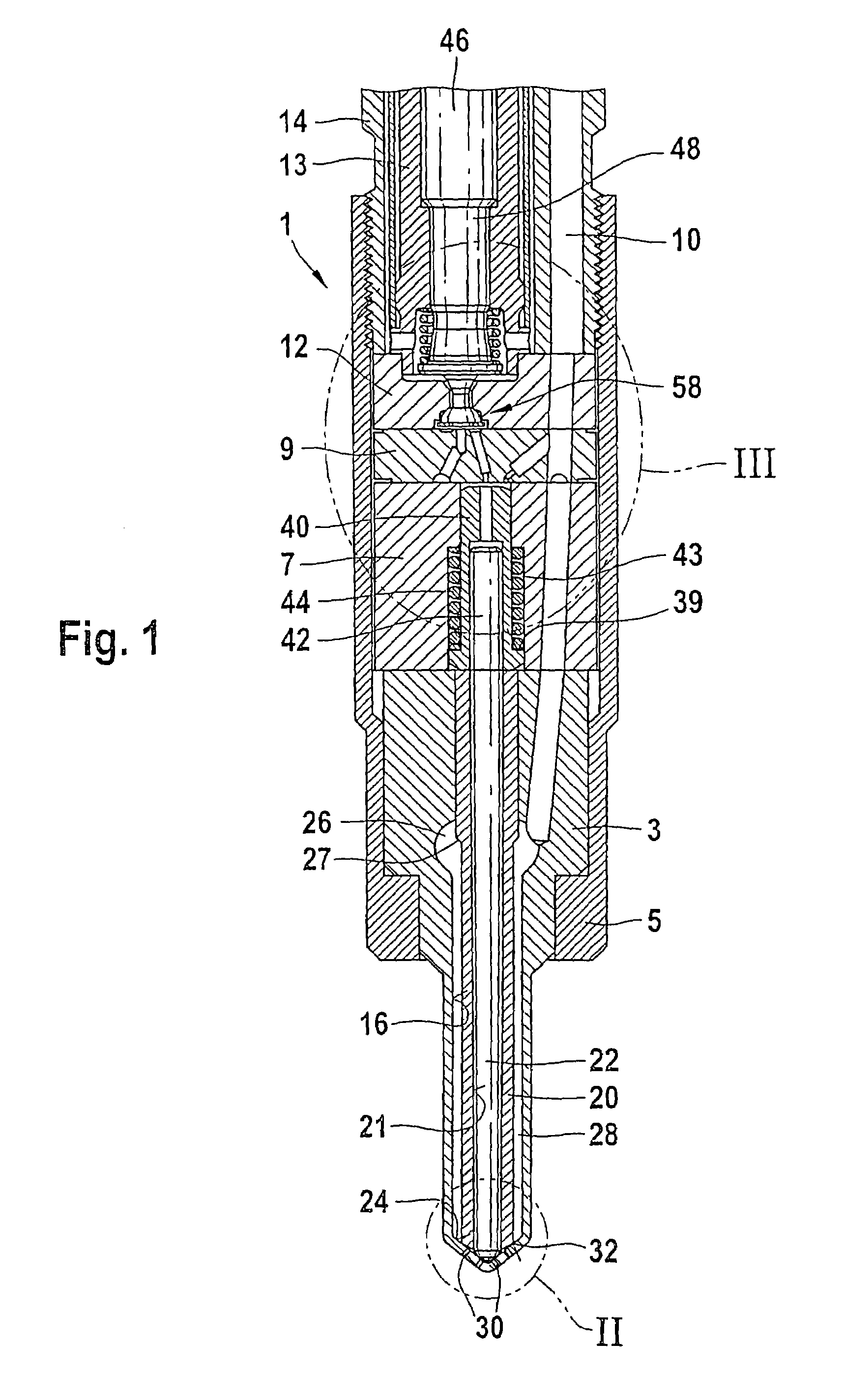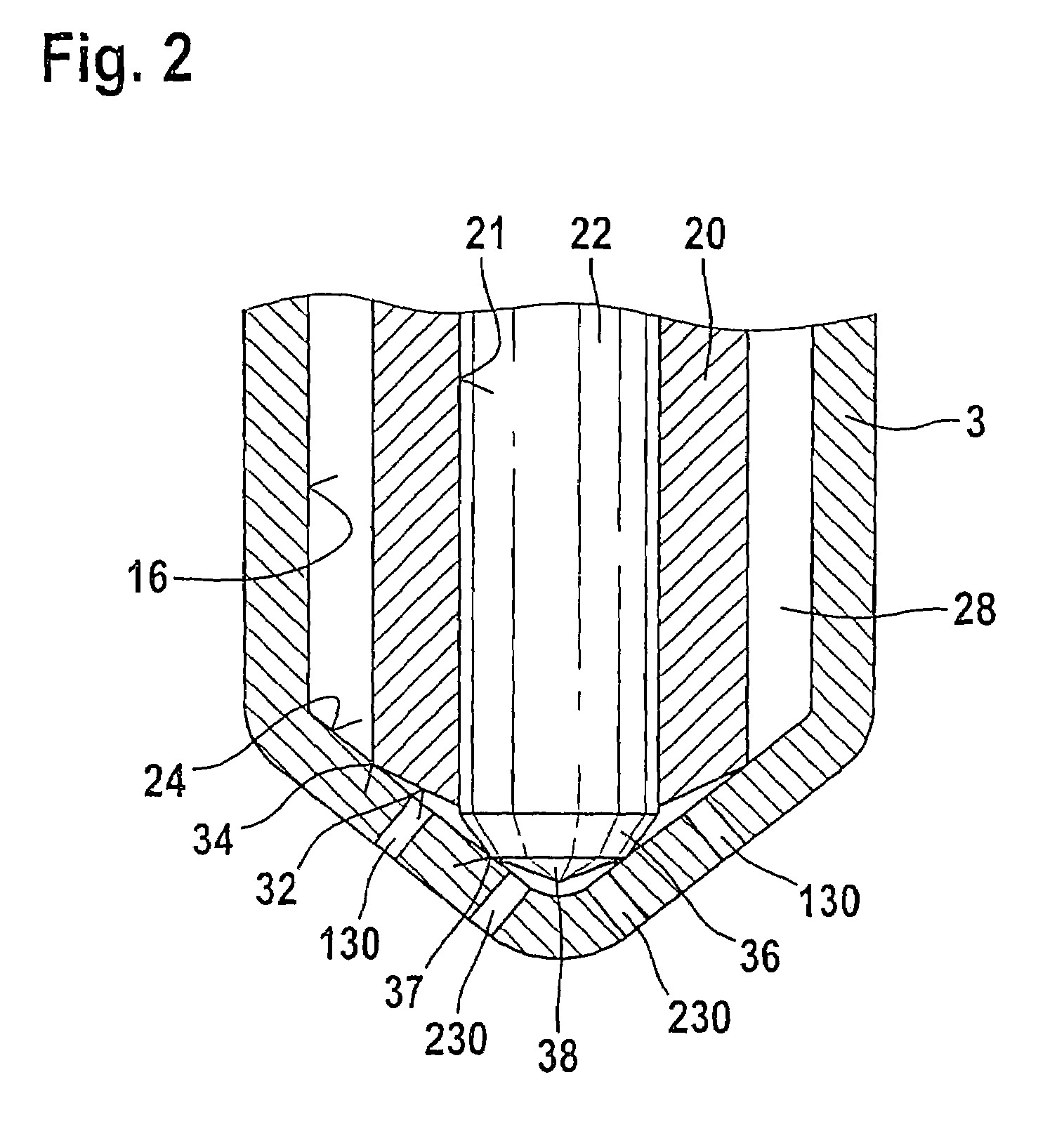Fuel injection valve for internal combustion engines
a fuel injection valve and internal combustion engine technology, which is applied in the direction of fuel injection apparatus, spraying apparatus, feeding system, etc., can solve the problems of not being able to control the injection cross section of the known fuel injection valve, not being able to generate the closing force of the outer valve needle, and being relatively complicated and hence expensive to produce. , to achieve the effect of minimizing the leakage of fuel injection valves and high pressur
- Summary
- Abstract
- Description
- Claims
- Application Information
AI Technical Summary
Benefits of technology
Problems solved by technology
Method used
Image
Examples
Embodiment Construction
[0021]In FIG. 1, a longitudinal section is shown through a fuel injection valve of the invention, the fuel injection valve having a housing 1, which has a valve body 3, an intermediate body 7, an intermediate disk 9, a control body 12, and a retaining body 14, with these components each resting on one another in the order recited. All these parts of the housing 1 are pressed against one another by their contact faces by means of a lock nut 5. A high-pressure conduit 10 embodied in the housing 1 communicates with a high-pressure fuel source, not shown in the drawing, and extends as far as the inside of the valve body 3 through the retaining body 14, the control body 12, the intermediate disk 9, and the intermediate body 7. In the valve body 3, the high-pressure conduit 10 discharges into a pressure chamber 26, which is embodied as a radial enlargement of a bore 16 embodied in the valve body 3. The bore 16, on its end toward the combustion chamber, is closed off by a seat face 24, and...
PUM
 Login to View More
Login to View More Abstract
Description
Claims
Application Information
 Login to View More
Login to View More - R&D
- Intellectual Property
- Life Sciences
- Materials
- Tech Scout
- Unparalleled Data Quality
- Higher Quality Content
- 60% Fewer Hallucinations
Browse by: Latest US Patents, China's latest patents, Technical Efficacy Thesaurus, Application Domain, Technology Topic, Popular Technical Reports.
© 2025 PatSnap. All rights reserved.Legal|Privacy policy|Modern Slavery Act Transparency Statement|Sitemap|About US| Contact US: help@patsnap.com



